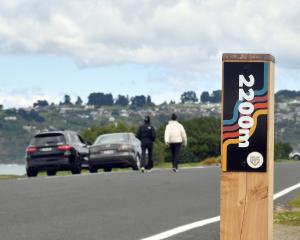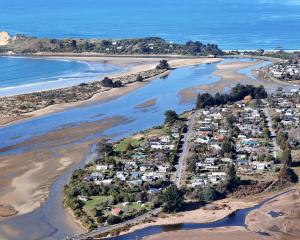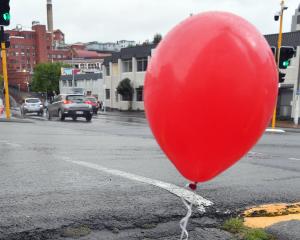The second of two subdivisions planned for Outram will be safe to develop, despite concerns seismic activity, liquefaction and flooding could threaten the site, a Dunedin City Council hearings committee has been told.
The evidence came as representatives for Balmoral Developments (Outram) Ltd presented arguments in favour of a plan change to the council's hearings committee yesterday.
The company, together with an adjoining landowner, want to build 24 homes on 6.7ha of rural land beside State Highway 87, Holyhead Rd and Mountfort St.
Balmoral has applied to the council for a plan change for the subdivision, which would have the district plan amended and the rural land rezoned for residential use.
That was despite opposition from some neighbours and concerns from the Otago Regional Council, in its submission, that the site was unsuitable because of the risk of liquefaction and settlement in an earthquake.
The suggestion was rejected as Balmoral's directors, Cathy and Neville Fergusson, solicitor Phil Page and a panel of seven expert witnesses began presenting the case for the subdivision yesterday.
Tonkin and Taylor senior geotechnical engineer Colin Macdiarmid, appearing for Balmoral, confirmed there was a risk of ''piping'' beginning at the site, which was protected from the nearby Taieri River by a floodbank.
Piping could occur when the water level on one side of the embankment was higher than on the other, and could lead to water seeping under the floodbank towards the lower side, with the potentially to cause the embankment to settle or fail completely, he said.
Investigations had concluded there was a risk of piping beginning at the site, but only to an early stage and only in some areas, he said.
There was only a ''very low'' risk of the process progressing to later stages, and problems could be addressed by engineering solutions, such as a slurry wall, he said.
''There's no reason we can see that the development should not proceed because of the piping risk,'' he said.
He also doubted liquefaction would be an issue, even though silty soils under the site were potentially problematic.
That was because groundwater - a key ingredient for liquefaction - was only found 5m below the surface, meaning there was a protective buffer between the water and the surface, he said.
The situation was different from that found in Christchurch's eastern suburbs, and potentially problematic parts of South Dunedin, where homes built on land vulnerable to liquefaction had groundwater just below the surface, Mr Macdiarmid said.
Engineering solutions, such as deeper piles or more flexible building structures, could also be used to address any threat, he suggested.
Evidence from engineering consultant David Hamilton, the principal of David Hamilton and Associates Ltd, also concluded existing floodbanks were adequate for the threat of flooding from the Taieri River.
Speaking earlier, Balmoral's solicitor, Mr Page, also responded to concerns from some neighbours worried development of the site - a former market garden - would mean the loss of high-class soils.
Mr Page told the committee the site had proven not to be viable as a market garden, meaning the soils were already lost in a ''production sense''.
However, the 2000sq m lots within the subdivision could attract buyers interested in lifestyle properties, who could put the soil to use ''albeit at a hobby scale'', he said.
Other witnesses called by Balmoral yesterday argued there would be sufficient water to supply the new subdivision, without ''significantly impacting'' on existing Outram residents, and that the site was suitable for an on-site wastewater management system.
The development would see a ''modest'' increase in stormwater runoff, but that could be dealt with by turning a 25th lot at the subdivision into a stormwater detention pond, engineer Gary Dent, an associate at Spiire New Zealand, said.
A pump would also be installed to drain the pond's contents into the nearby West Taieri drain or over the stopbank and into the Taieri River, he said.
Balmoral's plan change request was the second to be considered by the council's hearings committee, after Two Note Ltd had earlier sought a plan change to allow 7.7ha of rural land on Formby St to be rezoned for 28 houses.
A decision on that application was still pending, but it - and Balmoral's plans - had both run into opposition from neighbours.
Balmoral's application had attracted 15 submissions, including eight opposed to the subdivision and just two in support.
Neighbours were worried about stormwater runoff, flooding, traffic congestion and pressure on existing infrastructure, on top of the ORC's concerns about water quality and seismic risks.
The hearing concludes today.











